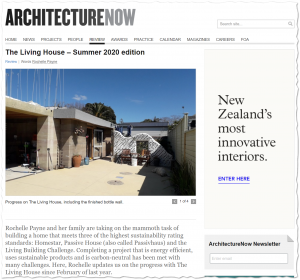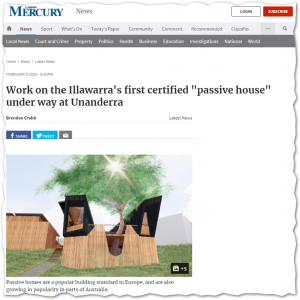Article by Colleen Hawkes for Stuff What will define Kiwi architecture in the 2020s? ” And what does the future hold? In a nutshell, we can expect to see more certified Passive Houses that reduce energy needs to almost zero, more sustainable materials and design, greater use of solar power, more prefabrication, lots of different housing options – and an …
Need more than just higher performance building code changes to decarbonize

“In buildings, it has become clear that there are two very distinct problems. One concerns new buildings — where, for example, advanced heat pump technology can allow for electrification of heating systems. The other, much bigger problem is how to cut emissions from existing buildings, which will account for most emissions from this sector. Here the actions are a blend …
Leaking, mouldy classrooms are just the symptom

Mould can make kids sick, that’s the key takeaway here. It gets worse the more mould there is and the more time they are exposed to it. Kids are required to spend heaps of time in school. We need to fix their exposure to things that can make them sick—lifelong sick. The Ministry of Education has a huge challenge given …
Into the lion’s den: talking Passive House to earth builders

“What I didn’t realise is that Passivhaus is actually a simplification of design, where I originally thought it was all about complicated mechanical systems. This speaker made me realise that Passivhaus and earth building could be a match made in heaven.” —Editor, Earth Building I’ve struggled myself to explain Passive House in a way that people can grasp. From the …
Mouldy Schools Resource

Mouldy Schools Resource Some advice from health professionals and articles on damp mouldy schools. We are building scientists and are not health professionals or even public health researchers (we strongly recommend listening to those folks and enjoy learning at Public Health Summer School each year in Wellington). Advice for homes which is applicable to schools as well. Schools for Health show …
New Yorkers get behind Passive House

New York City is a hot spot of Passive House development due to forward-thinking owners and developers and encouragement from the city government and utilities. New apartment blocks are being built to Passive House standard and there’s also been a surge in retrofitting townhouses and historic brownstones to the same level of performance. Shutting out noise from the street and …
How to trigger social tipping points to get action on climate

Systemic change is needed to fix the issues we have with buildings in New Zealand. It can’t just be left to individuals choosing to do better. Doing it right and thinking long term needs to become the norm. Changing this social norm is really hard. Even folks that are fully on board intellectually with doing buildings right are still exposed …
Europe’s plan to create jobs and reach zero carbon

Creating net jobs while cutting net emissions is going to be challenging. Although the building sector can do this through efficiency—saving money at the same time as we build better buildings—not every sector of the economy can do this. The least painful way forward is to take the long view to net-zero and plan for it. Individuals, companies and governments …
Can a small building with a complex shape hit PH performance?

This showhome in NSW Australia is targeting Passive House performance levels. This is a very challenging project: it is small but also complex with a high form factor because of its non-rectilinear design. Its performance has been tightly optimised in order to contain costs, so it will demand perfect execution by the builder (who is also the client). Alexander Symes …
